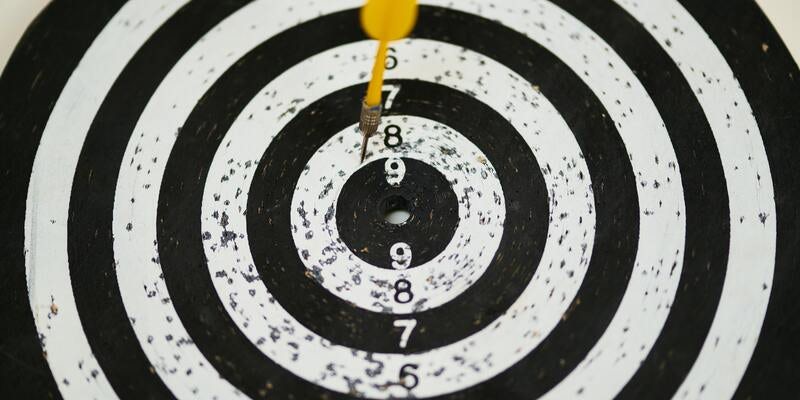Campaign subscription block
Subscribe to my campaign
Yep, you have a description here
Share block
Background rounded + two column black friday

Get Lifetime membership PLUS credit on coaching to set you up for success.
Hero block followed by background change
This is a hero
Heading for the hero
Paragraph for the hero. A text block can be added here to tweak the size of the text.
Here's an important FAQ list
Deep Work with italic Header to make it look better
Calendar
Press
Everybody's talking about FLOWN
See our press cuttings





Getting Started Block
Getting Started
Our members walk away feeling proud and enter their weekend feeling in control and on top
1
Join FLOWN and try a deep work session
2
State your deep work goals to your Flock
3
Work silently alongside other deep workers
4
Recharge your finite focus reserves of accountability
New Quoteblock
Elementums purus risus faucibus plateas consecteturs etiam. Diam, urna, cursus erat malesuada amet tempor. Erat sed.
Old Quoteblock
BoxOut
What happens in a deep work session?
Flocks are our facilitated deep work sessions They are designed to block distraction, increase motivation and help your employees achieve more and feel good doing it.
- Run on a Zoom guided by one of our experts facilitators
- 7 Sessions every weekday, each with a different style and focus
- State your goals to your Flock and settle down to focus
Blog Posts Block
Some Title
Some description
What is deep work?
Deep work is work that requires your distraction-free focus. It’s work that taxes your brain just the right amount. And it’s work that actually makes a difference – whether that’s delivering a meaningful project in your job or work that takes your personal development to a new level.

Doesn’t that sound great? Does it relate to your actual work life? If not, the four rules for deep work below are for you!
The term deep work was coined by computer science professor Cal Newport. In his book Deep Work: Rules for Success in a Distracted World, Newport defined deep work as…
“Professional activities performed in a state of distraction-free concentration that push your cognitive capabilities to their limit. These efforts create new value, improve your skill, and are hard to replicate.”
Cal Newport and deep work
Seeing as Cal Newport invented the term ‘deep work’, and wrote a book about it, it’s only fair that you check out what he’s getting at.
First, let’s establish his credentials.
Who is Cal Newport?
On top of being a computer science professor at MIT, he’s a prolific writer on the topic of productivity and success. His first few books focused on being a top student (How to Win at College, How to Become a Straight-A Student, How to Be a High School Superstar).

He then turned his attention to
work and lifestyle, with books such as So Good They Can’t Ignore You, Digital Minimalism, Deep Work, and most recently A World Without Email (we know, quite the bold idea).
He’s got multiple New York Times bestsellers to his name. He’s a contributing writer for The New Yorker (where he once namechecked FLOWN, swoon!). He also runs a podcast called Deep Questions, and has consistently written on his Study Hacks blog since 2007.
On top of that, he holds down his job as a professor, publishing academic papers like they’re going out of fashion. (Were academic papers ever in fashion? Not sure, but you get what we mean).
So, Cal Newport knows a thing or two about being productive, and getting stuff done.
Deep Work: the central hypothesis
The central hypothesis of Deep Work is a call to arms for knowledge workers who want to get on in their careers, and have a better relationship with work.

“The ability to perform deep work is becoming increasingly rare at exactly the same time it is becoming increasingly valuable in our economy,” writes Newport. “As a consequence, the few who cultivate this skill, and then make it the core of their working life, will thrive.”
What does this mean?
It means that we live in a distraction economy. The biggest companies in the world – Meta, Twitter, Google – are spending zillions of dollars with the sole purpose of distracting you. They hire the best brains straight out of college to find increasingly sophisticated ways to get your attention.

At the same time, the world of work is becoming increasingly distracting. We’ve all embraced technology, particularly during the pandemic and in the post-lockdown era. But this means that our attention is regularly hijacked, thanks to the little green ‘Available’ sign on all our work apps.
In this context, it’s a wonder that anybody gets anything meaningful done at all. Indeed, many workers feel constantly overwhelmed and consumed by their inbox. Do you get to the end of the day and feel like you’ve been working non-stop with nothing to show for it?
When Cal Newport says “the few who cultivate this skill [deep work], and then make it the core of their working life, will thrive”, he’s looking at you.
Deep work versus shallow work
We’ve already told you Newport’s definition of deep work:
“Professional activities performed in a state of distraction-free concentration that push your cognitive capabilities to their limit. These efforts create new value, improve your skill, and are hard to replicate.”
So what is the opposite of deep work? Shallow work. Over to Cal…
“Shallow Work: Noncognitively demanding, logistical-style tasks, often performed while distracted. These efforts tend to not create much new value in the world and are easy to replicate.”
How do you feel about your days at work now you’ve read these definitions?
Shallow work isn’t just the opposite of deep work. It’s also its arch enemy. Because while you’re engaged in shallow work, you cannot begin to think about deep work. That work that’s going to make you feel good, and might even advance your career? It’s not going to happen.
Newport writes in Deep Work that modern work is conditioning you to live in a cycle of shallow work and shallow distraction.
“In an age of network tools…knoweldge workers increasingly replace deep work with the shallow alternative—constantly sending and receiving email messages like human network routers, with frequent breaks for quick hits of distraction.”
It’s a bleak outlook. But the benefits of retraining your mind for deeper work are immense. Indeed, FLOWN has created a load of tools purely to help frazzled knowledge workers do just that.
The benefits of deep work
Let’s forget the doom and gloom. Embracing a deep work lifestyle is absolutely doable for you. And it brings a host of benefits.
Do more in less time
According to one seminal study at the University of California, it takes 23 minutes to recover your focus after a distraction. Consider how many times you’re distracted in a day. The implication is horrifying for a messaging-addled knowledge worker.
In a typical seven-hour working day, it would require 18 distractions to prevent you spending any time whatsoever focused on a task.
Extrapolated like this, it explains how you can go a day working full pelt with nothing to show for it at the end.
What’s the flipside? If you can learn to block out distractions, you’ll be streets ahead of your peers when it comes to focusing and making progress on your projects.
You’ll be prioritizing the work that makes a difference, rather than spending your days responding to messages and your evenings trying to catch up on the meatier pieces.
TIP: Use an app such as Freedom to block distracting websites and apps on all your devices. FLOWN members get a great deal on Freedom through our member perks.
Achieve better quality of work
A by-product of the banishment of distraction is better quality of output. If you’re a ‘knowledge worker’, you’re paid for your knowledge – your ability to think critically and solve problems.
Shallow work means you don’t get the mental space and actual time to deliver any critical thinking or problem solving.
Committing to deep work means you’ll actually deliver on your remit – and you’ll be demonstrating your value to whoever marks your homework, be that your client, your boss, your editor or your team.
Enhance your career with deep work
This is what Cal Newport means when he says that deep work is “becoming increasingly rare at exactly the same time it is becoming increasingly valuable”.
If you, as a knowledge worker, repeatedly deliver better output as a result of your commitment to deep work, you’ll be noticed. You’ll also be forgiven for setting your status as ‘Do Not Disturb’ for several hours a day.
Deep work and wellness
Quite apart from your performance at work, deep work is a recipe for feeling better about your life. Constant distraction is stressful. It triggers the fight, flight or freeze response in your brain and makes you feel like you’re getting nowhere (because you are getting nowhere).
A deep focus on an absorbing task is central to a human being’s feeling of fulfillment. The highest human need in Maslov’s hierarchy of needs is self actualization – ”the desire to become the most that one can be”. Deep work enables you to do this.
Signup Button
Here are the picture options:
This is /illustration header block

This goes off centre with the rest of the content
This is illustration and content with just a pic in it.

This is Illustration and content with pic and text

Deep Work: the central hypothesis
The central hypothesis of Deep Work is a call to arms for knowledge workers who want to get on in their careers, and have a better relationship with work.
“The ability to perform deep work is becoming increasingly rare at exactly the same time it is becoming increasingly valuable in our economy,” writes Newport. “As a consequence, the few who cultivate this skill, and then make it the core of their working life, will thrive.”
This is what that would look like if you tried to flow text around it.
Deep Work: the central hypothesis
The central hypothesis of Deep Work is a call to arms for knowledge workers who want to get on in their careers, and have a better relationship with work.
“The ability to perform deep work is becoming increasingly rare at exactly the same time it is becoming increasingly valuable in our economy,” writes Newport. “As a consequence, the few who cultivate this skill, and then make it the core of their working life, will thrive.”

Deep Work: the central hypothesis
The central hypothesis of Deep Work is a call to arms for knowledge workers who want to get on in their careers, and have a better relationship with work.
“The ability to perform deep work is becoming increasingly rare at exactly the same time it is becoming increasingly valuable in our economy,” writes Newport. “As a consequence, the few who cultivate this skill, and then make it the core of their working life, will thrive.”
The central hypothesis of Deep Work is a call to arms for knowledge workers who want to get on in their careers, and have a better relationship with work. “The ability to perform deep work is becoming increasingly rare at exactly the same time it is becoming increasingly valuable in our economy,” writes Newport. “As a consequence, the few who cultivate this skill, and then make it the core of their working life, will thrive.”
“The ability to perform deep work is becoming increasingly rare at exactly the same time it is becoming increasingly valuable in our economy,” writes Newport. “As a consequence, the few who cultivate this skill, and then make it the core of their working life, will thrive.”
Illustration and content (reverse option):
By default, the block will always position the image on the left and the text on the right. With reverse, the image is now on the right and the content on the left.

Deep Work: the central hypothesis
The central hypothesis of Deep Work is a call to arms for knowledge workers who want to get on in their careers, and have a better relationship with work.
“The ability to perform deep work is becoming increasingly rare at exactly the same time it is becoming increasingly valuable in our economy,” writes Newport. “As a consequence, the few who cultivate this skill, and then make it the core of their working life, will thrive.”
Testing using Hero block for pictures
“The ability to perform deep work is becoming increasingly rare at exactly the same time it is becoming increasingly valuable in our economy,” writes Newport. “As a consequence, the few who cultivate this skill, and then make it the core of their working life, will thrive.”
“The ability to perform deep work is becoming increasingly rare at exactly the same time it is becoming increasingly valuable in our economy,” writes Newport. “As a consequence, the few who cultivate this skill, and then make it the core of their working life, will thrive.”

Hero block for pictures, with no text
this one is with it set as the background image

this one is with it set as the content image, left aligned

Here is trying to do hero content block for right aligned image of Cal, and flowing text around it
“Professional activities performed in a state of distraction-free concentration that push your cognitive capabilities to their limit. These efforts create new value, improve your skill, and are hard to replicate.”
Cal Newport and deep work
Seeing as Cal Newport invented the term ‘deep work’, and wrote a book about it, it’s only fair that you check out what he’s getting at.
First, let’s establish his credentials.

“Professional activities performed in a state of distraction-free concentration that push your cognitive capabilities to their limit. These efforts create new value, improve your skill, and are hard to replicate.”
Desktop columns component

This is the text in the first columnThis is the text in the first columnThis is the text in the first columnThis is the text in the first columnThis is the text in the first columnThis is the text in the first columnThis is the text in the first columnThis is the text in the first columnThis is the text in the first columnThis is the text in the first columnThis is the text in the first column
This is the text in the first columnThis is the text in the first columnThis is the text in the first column
This is the text in the first column

This is the text in the second column
This is the text in the second columnThis is the text in the second columnThis is the text in the second columnThis is the text in the second columnThis is the text in the second columnThis is the text in the second columnThis is the text in the second columnThis is the text in the second columnThis is the text in the second columnThis is the text in the second column
This is the text in the second columnThis is the text in the second columnThis is the text in the second columnThis is the text in the second column
Should be able to add more stuff here

GET TO KNOW
2:1

This is the text in the first columnThis is the text in the first columnThis is the text in the first columnThis is the text in the first columnThis is the text in the first columnThis is the text in the first columnThis is the text in the first columnThis is the text in the first columnThis is the text in the first columnThis is the text in the first columnThis is the text in the first column
This is the text in the first columnThis is the text in the first columnThis is the text in the first column
This is the text in the first column

This is the text in the second column
This is the text in the second columnThis is the text in the second columnThis is the text in the second columnThis is the text in the second columnThis is the text in the second columnThis is the text in the second columnThis is the text in the second columnThis is the text in the second columnThis is the text in the second columnThis is the text in the second column
This is the text in the second columnThis is the text in the second columnThis is the text in the second columnThis is the text in the second column
Should be able to add more stuff here

GET TO KNOW
1:2

This is the text in the first columnThis is the text in the first columnThis is the text in the first columnThis is the text in the first columnThis is the text in the first columnThis is the text in the first columnThis is the text in the first columnThis is the text in the first columnThis is the text in the first columnThis is the text in the first columnThis is the text in the first column
This is the text in the first columnThis is the text in the first columnThis is the text in the first column
This is the text in the first column

This is the text in the second column
This is the text in the second columnThis is the text in the second columnThis is the text in the second columnThis is the text in the second columnThis is the text in the second columnThis is the text in the second columnThis is the text in the second columnThis is the text in the second columnThis is the text in the second columnThis is the text in the second column
This is the text in the second columnThis is the text in the second columnThis is the text in the second columnThis is the text in the second column
Should be able to add more stuff here

GET TO KNOW
Illustration header component
Ilustration header - image is always centered

Where exactly does this go?
